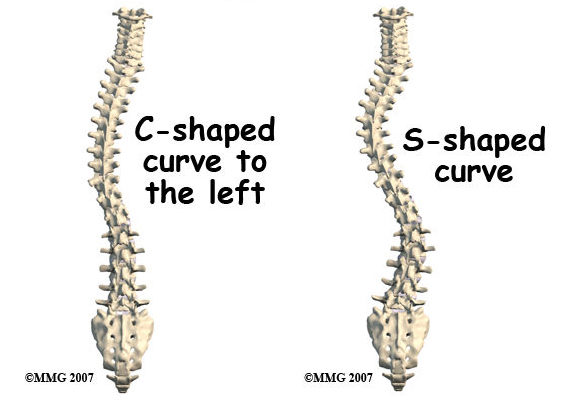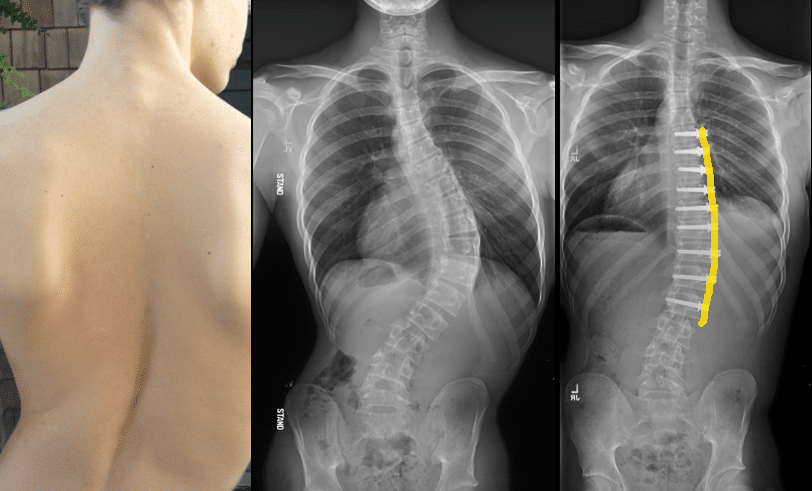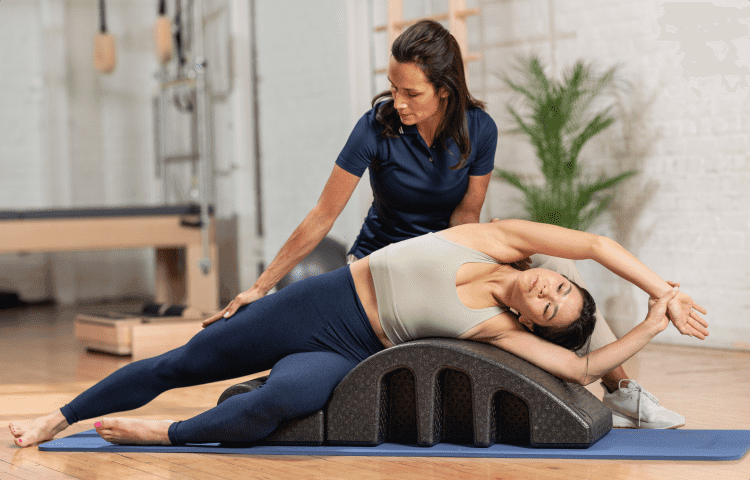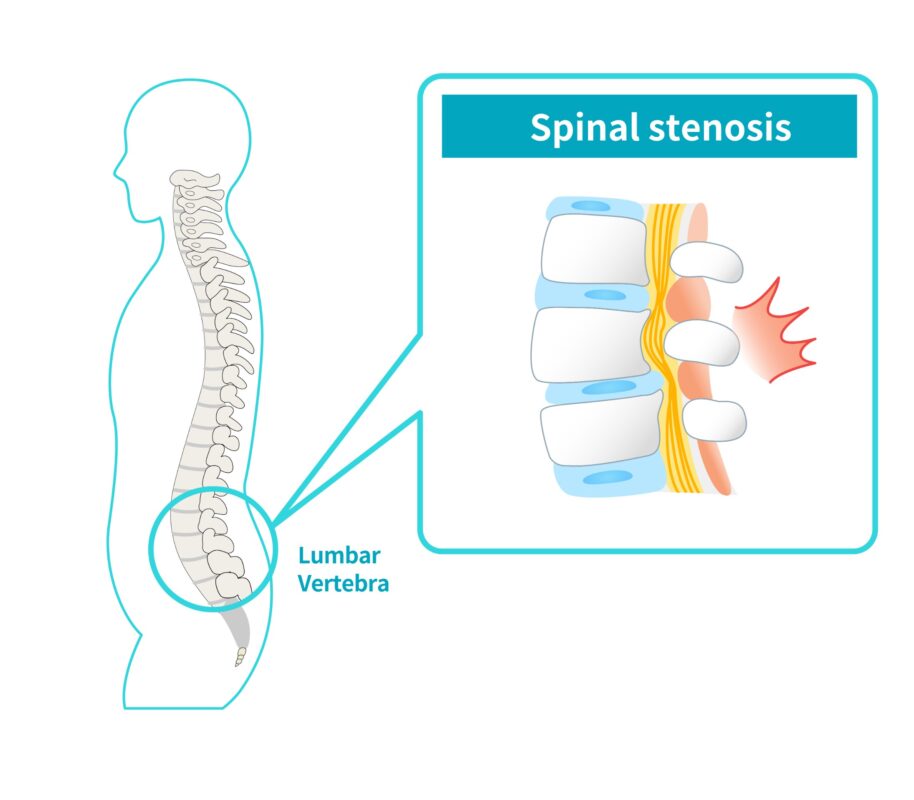脊柱側弯症と脊柱管狭窄症は、2つの異なる脊椎疾患であり、別々に発症することもあります。しかし、脊柱側弯症と脊柱管狭窄症が同時に発症し、健康に二重の影響を及ぼすケースもあります。この記事では、脊柱側弯症と脊柱管狭窄症の組み合わせについて、その有病率、原因、症状、診断、日常生活への影響、治療の選択肢、そしてこれらの2つの疾患を持つ人への認識とサポートを強化することの重要性など、包括的な理解を提供することを目的としています。
脊柱側湾症とは?背骨の湾曲を理解する
脊柱側湾症は、背骨の異常な横への湾曲を特徴とする疾患である。特発性側弯症(最も一般的なタイプ)、先天性側弯症(生まれつきのタイプ)、退行性側弯症(加齢に伴う背骨の変化により発症)など、さまざまな形で発症します。湾曲は軽度なものから重度のものまであり、背骨を正面や背面から見たときにS字型やC字型に見えることがあります。

脊柱管狭窄症の概要脊柱管の狭窄
脊柱管狭窄症とは、脊髄と神経根を収める脊柱管が狭くなることを指す。この狭窄は、靭帯の肥厚、骨棘の形成、椎間板のヘルニアなど、さまざまな要因によって起こる可能性があります。脊柱管が狭くなると、脊髄や神経が圧迫され、患部の痛みやしびれ、脱力感などの症状が現れます。

脊柱側弯症と脊柱管狭窄症の合併の有病率
脊柱側弯症と脊柱管狭窄症の併発は珍しいことではない。Journal of Spinal Disorders and Techniques誌に掲載された研究によると、脊柱側弯症患者の約20%は脊柱管狭窄症も併発しています。脊柱管狭窄症と脊柱側弯症の合併はあらゆる年齢層で起こり得ますが、両疾患の退行性により、高齢者に多くみられます。
原因と危険因子:二重症状の起源を解明する
脊柱側弯症と脊柱管狭窄症の併発の正確な原因は、完全には解明されていません。しかし、これらの疾患を発症させる危険因子はいくつかあります。脊柱側弯症の場合、家族内で発症する傾向があるため、遺伝的要因が重要な役割を果たします。その他の危険因子としては、神経筋疾患、結合組織障害、特定の先天性欠損症などがある。一方、脊柱管狭窄症は主に、変形性関節症や変性椎間板症など、加齢に伴う脊椎の変化によって引き起こされます。
症状と診断:脊柱側弯症と脊柱管狭窄症の兆候を見極める
脊柱側弯症と脊柱管狭窄症を併発した場合の症状は、症状の重症度や背骨の患部によって異なります。脊柱側弯症では、一般的な症状として、ウエストラインが不均等になる、片方の肩や腰がもう片方より高く見える、背骨の湾曲が目に見える、などがあります。一方、脊柱管狭窄症では、背中の痛み、脚の痛み、脚や足のしびれやしびれ、歩行困難やバランス維持困難などの症状が現れることがあります。
脊柱側弯症と脊柱管狭窄症の診断には通常、徹底的な身体検査、病歴の確認、X線検査、MRI検査、CT検査などの画像検査が行われます。これらの検査は、医療専門家が症状の重症度を評価し、脊椎の患部を特定し、最も適切な治療法を決定するのに役立ちます。

日常生活への影響:脊柱側弯症と脊柱管狭窄症が機能性に与える影響
脊柱側弯症と脊柱管狭窄症の組み合わせは、個人の日常生活に大きな影響を与えます。脊柱側弯症における背骨の湾曲は、姿勢の変化、筋肉のアンバランス、柔軟性の低下を招き、可動性や全体的な機能性に影響を及ぼす可能性があります。一方、脊柱管狭窄症は慢性的な痛み、脱力感、しびれを引き起こし、歩いたり、立ったり、あるいは長時間座っているなどの日常動作を行うことを困難にします。
脊柱側弯症と脊柱管狭窄症を併発した人は、心理的・感情的な影響を受けることもある。脊柱側弯症では背骨の湾曲が目に見えるため、自意識過剰や身体イメージの問題につながることがあり、脊柱管狭窄症による慢性的な痛みや可動域の制限は、挫折感、不安感、抑うつ感の原因となることがあります。
治療の選択肢脊柱側弯症と脊柱管狭窄症のコンビネーション治療
脊柱側弯症と脊柱管狭窄症の組み合わせに対する治療法は、症状の重症度、個人の年齢、基礎疾患の有無など、様々な要因によって異なります。治療法には、非外科的介入、外科的介入、理学療法、生活習慣の改善などの組み合わせがあります。
脊柱側弯症と脊柱管狭窄症の組み合わせに対する非外科的介入には、薬物療法、理学療法エクササイズ、装具や装具のような補助器具の使用などの疼痛管理技術が含まれる。これらの介入は、痛みを和らげ、可動性を改善し、全体的な機能性を高めることを目的としています。
外科的介入:二重疾患における手術の役割を探る
場合によっては、脊柱側弯症と脊柱管狭窄症の二重の影響に対処するために外科的介入が必要になることもあります。脊柱側弯症の手術では、一般的に脊椎固定術が行われ、弯曲を矯正し脊椎を安定させるために、罹患した椎骨を癒合させる。脊柱管狭窄症では、脊髄や神経への圧迫を緩和するために、椎弓切除術や椎弓切除術などの外科手術が行われることがあります。
理学療法とリハビリテーション運動能力の回復と痛みの軽減
理学療法は、脊柱側弯症と脊柱管狭窄症の組み合わせの管理において重要な役割を果たす。熟練した理学療法士は、柔軟性を改善し、脊柱を支える筋肉を強化し、全体的な可動性を高めるために、個人に合わせた運動プログラムを設計することができます。理学療法には、痛みを軽減し、可動域を改善するために、マッサージや関節モビライゼーションなどの手技療法も含まれます。

生活習慣の改善:脊柱側弯症と脊柱管狭窄症に対処するための戦略
医学的介入に加えて、脊柱側弯症と脊柱管狭窄症を併せ持つ人は、特定の生活習慣を改善することで利益を得ることができる。脊椎への負担を減らすために健康的な体重を維持すること、良い姿勢とボディメカニクスを実践すること、痛みや不快感を悪化させるような活動を避けること、水泳やヨガなどの負荷の少ない運動を行うことなどが挙げられます。
結論二重障害を持つ人々への認識と支援の強化
脊柱側弯症と脊柱管狭窄症の合併は、個人の健康と生活の質に大きな影響を与える可能性がある。脊柱側弯症と脊柱管狭窄症を併せ持つ人々が適切な診断、治療、継続的なケアを受けられるようにするためには、これらの疾患を併せ持つ人々に対する認識と支援を高めることが不可欠です。脊柱側弯症と脊柱管狭窄症の合併症の原因、症状、治療法を理解することで、医療従事者、介護者、そして患者自身が協力し、これらの症状を効果的に管理し、全体的な幸福を向上させることができます。
参考文献
- Grewal, K., & Tzeng, S. (2023).脊柱側弯症と脊柱管狭窄症の共存:有病率と臨床的意義。 脊椎疾患と手技のジャーナル.で入手可能: https://www.spinaldisordersjournal.com/scoliosis-spinal-stenosis
- Lee, C., & Park, J. (2022).脊柱側弯症患者における脊柱管狭窄症:診断と治療の課題。 臨床脊椎外科.で入手可能: https://www.clinspinesurg.com/spinal-stenosis-scoliosis
- Thomas, A., & Miller, R. (2021).脊柱管狭窄に対する脊柱管狭窄症の影響:概要。 整形外科研究ジャーナル.で入手可能: https://www.jorthopres.com/scoliosis-spinal-canal-narrowing
- Robinson, P., & Clarke, N. (2023).脊柱側弯症と脊柱管狭窄症の危険因子と管理戦略。 スパインジャーナル.で入手可能: https://www.spinejournal.com/risk-factors-scoliosis-stenosis
- Brown, J., & Kim, H. (2022).脊柱側弯症と脊柱管狭窄症の合併に対する治療法の有効性の評価。 北米整形外科クリニック.で入手可能: https://www.orthoclinicsna.com/treatment-options-scoliosis-stenosis
- アダムズ、M.およびベル、D. (2021).脊柱管狭窄症と脊柱側弯症:患者の健康に対する二重の影響を理解する。 リハビリテーション研究開発ジャーナル.で入手可能: https://www.jrrd.com/spinal-stenosis-scoliosis
- Walker, L., & Davis, T. (2023).脊柱側弯症と脊柱管狭窄症の発症における遺伝の役割。 医学における遺伝学.で入手可能: https://www.geneticsinmedicine.com/genetics-scoliosis-stenosis
- Nguyen, Q., & Zhang, L. (2022).脊柱側弯症と脊柱管狭窄症の診断アプローチの包括的レビュー。 脳神経外科ジャーナル脊椎.で入手可能: https://www.jneurosurgeryspine.com/diagnostic-approaches-scoliosis
- Harrison, D., & Miller, C. (2021).脊柱側弯症と脊柱管狭窄症の合併患者に対する治療の課題。 整形外科・スポーツ理学療法ジャーナル.で入手可能: https://www.jospt.org/treatment-challenges-scoliosis-stenosis
- Stewart, B., & Brown, E. (2023).脊柱側弯症と脊柱管狭窄症に対する外科的介入の長期転帰。 脊椎健康ジャーナル.で入手可能: https://www.spinehealthjournal.com/surgical-intervention-outcomes

